Copyright 2007 by Roger Fields
All rights reserved. Published in the United States by
Ten Speed Press, an imprint of the Crown Publishing Group, a division of Random House, Inc., New York.
www.crownpublishing.com
www.tenspeed.com
Ten Speed Press and the Ten Speed Press colophon are registered trademarks of Random House, Inc.
Library of Congress Cataloging-in-Publication Data
Fields, Roger.
Restaurant success by the numbers: a money-guys guide to opening the next new hot spot / Roger Fields.
p. cm.
1. Restaurant management. I. Title.
TX911.3.M27F54 2007
647.95o68dc22 2007010637
eISBN: 978-0-307-77918-2
v3.1
CONTENTS
DREAMING FOR SUCCESS
DEVELOPING THE DETAILS
GETTING DOWN TO BUSINESS
Introduction
Recently, I went to a doctors office to get my eyes checked. After reviewing the patient info sheet and observing that Id been a restaurant owner since 1992, the ophthalmologist proceeded to tell me how fortunate I was to have lasted in such a difficult business for so long. When I told him that it was not all that bad, he would have no part of it. And when I asked him where he got his information, he told me emphatically, Its a well-known fact that 80 to 90 percent of all restaurants fail in the first year.
I hate to kick things off on a negative note, but as youll soon find out, unfortunately this is how most of your early conversations about opening your own restaurant will start, too. I want you to be prepared and, more important, resolute. As you may already know, the restaurant business has a bad rapone that it definitely does not deserve.
THE 90 PERCENT MYTH
There are actually two myths about restaurant success: the one my not-so-insightful doctor shared and its ugly stepsister, the notion that the 10 percent of restaurants that do succeed, do so only because of luck, otherwise known as the X factor. Lets start with the 90 percent bit.
Yes, your naysayer friends may have seen the caution printed in restaurant textbooks or in industry periodicals, or maybe they heard it on national television when Rocco DiSpirito of The Restaurant reality show lamented, The inventory is highly perishable, the overhead insaneits no wonder that about 90 percent of all restaurants fail in the first year. But listen carefully (you too, Rocco!): there is absolutely no evidence to support this much-cited failure rate. In fact, evidence points to the opposite.
A recent study found a restaurant failure rate of only 59 percent over a three-year period. The studys author, Ohio State University hospitality management professor, Dr. H. G. Parsa, studied 2,439 restaurants in Columbus, Ohio, using local health department data for the 1996 to 1999 period. Even including restaurants that closed for reasons other than financesfor example, divorce or retirementParsa found failure rates of only 26 percent in the first year, 19 percent in the second, and 14 percent in the third. After an extensive literature review on restaurant failures, I can find no evidence of a 90 percent failure rate anywhere, he concluded.
What? However, those rascally pessimists still arent satisfied. Columbus, Ohio, doesnt exactly have the same competition as New York or San Francisco, nor even the challenges faced in Washington, D.C., or Portland, Oregon. Well, these findings are consistent with an earlier study by Professor Chris Muller of the Cornell University School of Hotel Administration. He found that approximately 33 percent of all restaurants in the United States fail in the first year of operation. Thats a far cry from 90 percent. Another 33 percent of those remaining fail in the second year. But once past that crucial starting period, 65 percent of the restaurants that make it through their third year will survive for ten years. Professor Mullers study also found that only 10 percent of franchised restaurants failed in the first year, and 85 percent were still operating under the same ownership after five years.
More encouraging still is the Dun and Bradstreet survey of businesses that went bankrupt or closed with unpaid obligations between 1920 and 1998. The survey found that eating and drinking places had a failure rate of only about 1.06 percent!
The fact is, not only do restaurants not have the highest failure rate of all businesses, they actually compare exceedingly well. According to Dun and Bradstreet, apparel, furniture, and camera and electronic stores are all more likely to fail than restaurants. And things just keep getting better. Read on.
AN EVEN BRIGHTER FUTURE
As more and more Americans move to cities, they have less time and space to cook. People need a convenient way to eat when they come home from work. At the same time, meals are still social occasionstimes when friends or families get together. But fewer people these days have the energy to cook a big group meal and then actually enjoy it, especially knowing there will be dishes to wash after the guests have gone home. So what do Americans do? They go out to eat, of course!
In the United States, restaurants and food services together make up the nations largest retail sector. According to the National Restaurant Association, total restaurant-and-food service sales is projected to reach $537 billion at more than nine hundred thousand locations, with the industry experiencing its unprecedented sixteenth consecutive year of real growth.
Consider these facts as well:
 An average restaurant meal now costs only 20 percent more than cooking at home, compared to 93 percent more just ten years ago. A $10 purchase of groceries a decade ago would have cost a consumer $19 on average at a restaurant. Now the same basket of supermarket food costs $12.50 at a restaurant, making the decision to dine out or get takeout a far more economically sensible one, Paul Westra, an industry analyst at the Robertson Stephens investment bank in San Francisco, told Nations Restaurant News. The popular Zagat restaurant guide has even coined a term for restaurants that cater to customers who choose to go out for everyday meals: Better Alternative to Home, or BATH.
An average restaurant meal now costs only 20 percent more than cooking at home, compared to 93 percent more just ten years ago. A $10 purchase of groceries a decade ago would have cost a consumer $19 on average at a restaurant. Now the same basket of supermarket food costs $12.50 at a restaurant, making the decision to dine out or get takeout a far more economically sensible one, Paul Westra, an industry analyst at the Robertson Stephens investment bank in San Francisco, told Nations Restaurant News. The popular Zagat restaurant guide has even coined a term for restaurants that cater to customers who choose to go out for everyday meals: Better Alternative to Home, or BATH.
 As the number of American households earning two incomes grows, parents will have less time to prepare meals at home and thus will demand more dining conveniences. Four out of ten adults are cooking fewer meals at home than they did two years ago, according to a 2001 research study conducted by the National Restaurant Association. A similar study reported, Six out of ten adults (61 percent) indicated that having carry-out or delivery meals means they have more time to spend on other activities. Among eighteen- to twenty-four-year-olds surveyed, an astonishing 77 percent felt the same way.
As the number of American households earning two incomes grows, parents will have less time to prepare meals at home and thus will demand more dining conveniences. Four out of ten adults are cooking fewer meals at home than they did two years ago, according to a 2001 research study conducted by the National Restaurant Association. A similar study reported, Six out of ten adults (61 percent) indicated that having carry-out or delivery meals means they have more time to spend on other activities. Among eighteen- to twenty-four-year-olds surveyed, an astonishing 77 percent felt the same way.
 McKinsey & Companys Foodservice 2010 study predicts that restaurants will capture a larger share of the consumer food dollar than grocery stores for the first time as soon as the year 2010. Thats just around the corner from tomorrow.
McKinsey & Companys Foodservice 2010 study predicts that restaurants will capture a larger share of the consumer food dollar than grocery stores for the first time as soon as the year 2010. Thats just around the corner from tomorrow.
Given these national trends, it is not surprising that, despite economic downturns and high gas priceswhich siphon money from peoples discretionary spending to basic necessity budgetsthe industry continues to experience unprecedented growth. But trends alone do not spur growth; profits spur growth, and unlike the 90 percent story, thats no myth.







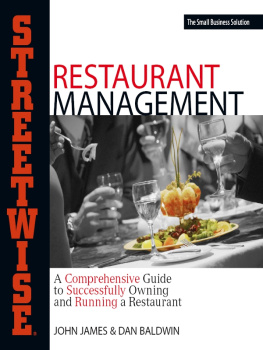
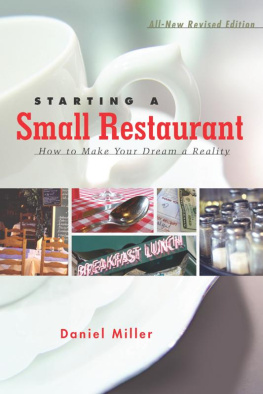





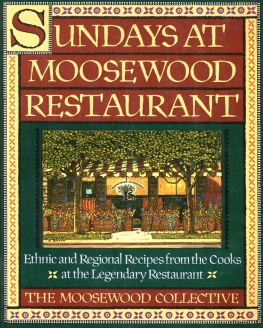
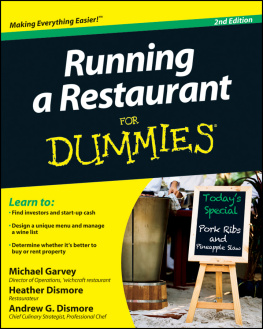

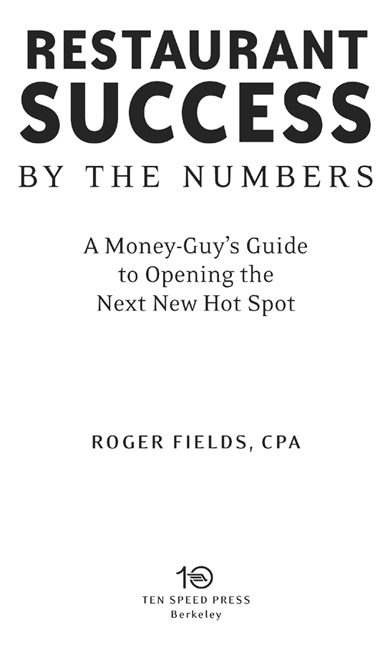
 An average restaurant meal now costs only 20 percent more than cooking at home, compared to 93 percent more just ten years ago. A $10 purchase of groceries a decade ago would have cost a consumer $19 on average at a restaurant. Now the same basket of supermarket food costs $12.50 at a restaurant, making the decision to dine out or get takeout a far more economically sensible one, Paul Westra, an industry analyst at the Robertson Stephens investment bank in San Francisco, told Nations Restaurant News. The popular Zagat restaurant guide has even coined a term for restaurants that cater to customers who choose to go out for everyday meals: Better Alternative to Home, or BATH.
An average restaurant meal now costs only 20 percent more than cooking at home, compared to 93 percent more just ten years ago. A $10 purchase of groceries a decade ago would have cost a consumer $19 on average at a restaurant. Now the same basket of supermarket food costs $12.50 at a restaurant, making the decision to dine out or get takeout a far more economically sensible one, Paul Westra, an industry analyst at the Robertson Stephens investment bank in San Francisco, told Nations Restaurant News. The popular Zagat restaurant guide has even coined a term for restaurants that cater to customers who choose to go out for everyday meals: Better Alternative to Home, or BATH.